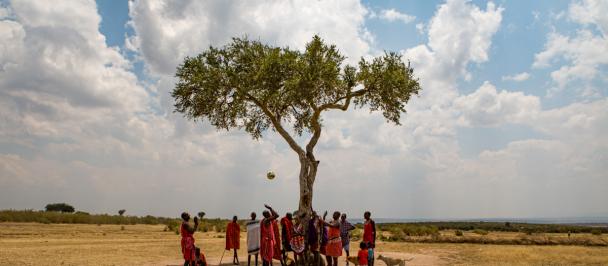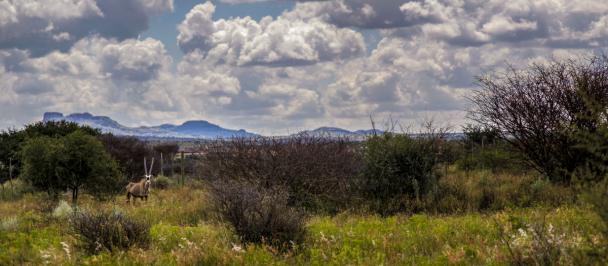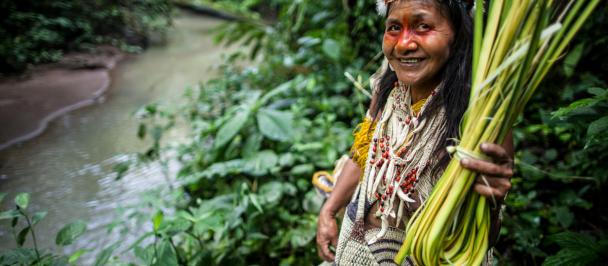I attended one of three major biodiversity planning meetings this February, originally scheduled for China, but relocated to Rome. The day I arrived, there were three cases of the coronavirus COVID-19 in northern Italy. Two days later there were 21, and five days later there were 229. I left the fifth day, without even attending the primary workshop. A colleague teased me, and I worried that I had over-reacted. From my early training in public health, I suspected this was not just a distant wave, but an unstoppable tsunami that would soon crash upon the world. A few short weeks later, the magnitude of this tsunami became clear, a once-in-a-century crisis that threatens to upend every society on earth.
This year was supposed to be a ‘Super Year for Nature,’ with a number of global meetings; a World Conservation Congress, a UN Ocean Conference, and a UN Nature Summit – all culminating in a global biodiversity conference that would agree on a decade-long 'Post-2020 Biodiversity Framework'. This was supposed to be the year that launched the Decade of Restoration, and that finally acknowledged nature-based solutions in climate negotiations. But COVID-19 had other plans. We must learn and adapt faster than ever, and the virus has lessons that apply to the global crises of biodiversity loss.
Exposing societal weaknesses
Complex, interconnected systems are as vulnerable as their weakest links. COVID-19 has exposed societal weaknesses around the world—in health care, homelessness, and inequality. Health care systems depend on vulnerable global supply chains for vital equipment. I had the luxury of returning from Rome early to purchase a modest stockpile of necessities and hunker down, but 80 percent of humanity lives on less than US$10 a day and will face this pandemic with no social or economic safety net whatsoever. These weaknesses both exacerbate, and are exacerbated by, a global pandemic.
Change can be complex and unpredictable. As I watched the numbers of cases escalate in Rome, it was clear that this was an exponential growth curve, a pattern that we tend to dramatically underestimate. It was also clear that there are tipping points; early actions have exponential benefits, late actions are exponentially more difficult, and actions beyond the point of no return may have little or no benefit at all. Our responses to change must be smart and proactive. Countries with strong and early measures for testing and isolating in order to ‘bend the curve’ of the pandemic are seeing the lowest death rates. The timing of our response is everything.
The pace and degree of transformative change can surprise us. Powerful business-as-usual interests want to maintain the status quo, but a crisis challenges these dynamics. Actions that seemed impossible yesterday seem possible today and could seem inevitable tomorrow. A Wuhan-like shutdown seemed impossible in Italy, an Italy-like shutdown seemed impossible in New York. Now shutdowns seem inevitable in cities around the world.
How can we apply these lessons apply to biodiversity?
1. Create a nature-based planetary safety net by strengthening the weakest links in our global systems
Nature and our economic systems are inextricably interwoven. Our global food system, for example, is vulnerable to biodiversity loss - as go the pollinators, so goes 35 percent of our global crops. With a million species at risk of extinction, including pollinators, we must shore up natural ecosystems as a planetary safety net for humanity.
2. Select dense, multi-dimensional solutions that solve complex, multi-dimensional challenges
We must be as efficient as possible in simultaneously solving multi-dimensional challenges in nature and development. There is already a growing call for green COVID-19 rescue plans. A good start would be to commit to massive inclusive investments in agroforestry, regenerative agriculture, mangrove restoration, and more. Such solutions help stem our biodiversity crisis, mitigate more than a third of greenhouse gases, prevent disasters, and buffer the more than two billion people in poverty who directly depend on nature for their livelihoods.
3. Commit to action now
We must be willing to take smart, strategic action. This means challenging the status quo, and the powerful interests that will resist change. We must listen to science, and understanding and avoiding nature’s tipping points. This means using the best available spatial data to make informed decisions about land use. As with COVID-19, taking steps to prevent species extinctions and ecological collapse is largely a matter of timing. I wondered if I had overreacted by leaving Italy too soon, until I read “everything you do before a pandemic seems overreacting, and everything you do after seems too little, too late.” The stakes for humanity have never been higher, and now is the time to act.
4. Craft a bold Marshall Plan for nature
We must act as one planet to solve our biodiversity crisis by crafting a bold, coordinated, comprehensive plan. The draft post-2020 biodiversity framework is not nearly transformative enough to change the trajectory of biodiversity loss. It is time for a Marshall Plan for nature, one that sufficiently invests in the protection, restoration and sustainable management of biodiversity, and that repositions nature at the heart of sustainable development. To do anything less is to succumb to a slow-moving crisis that will eventually have far more consequences for humanity than COVID-19.
Like nearly everything else, this year’s biodiversity events have largely been postponed, many until next year. However, if we can learn hard lessons from COVID-19 and apply them to the existential crisis of biodiversity loss as we head into recovery, 2020 just may well turn out to be a 'Super Year' for nature after all.

 Locations
Locations


